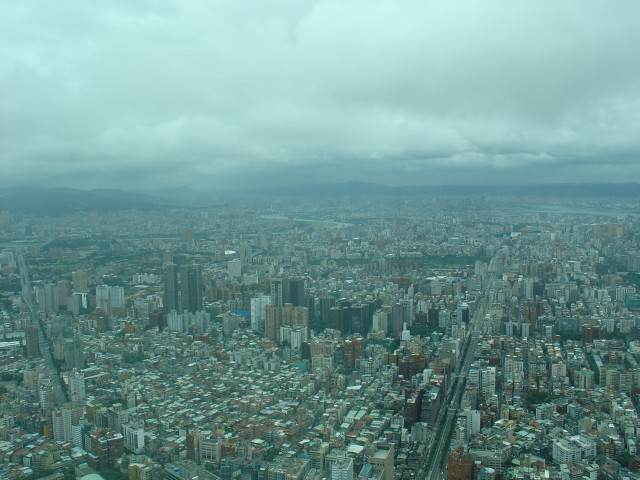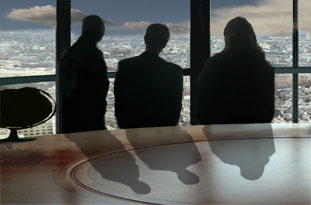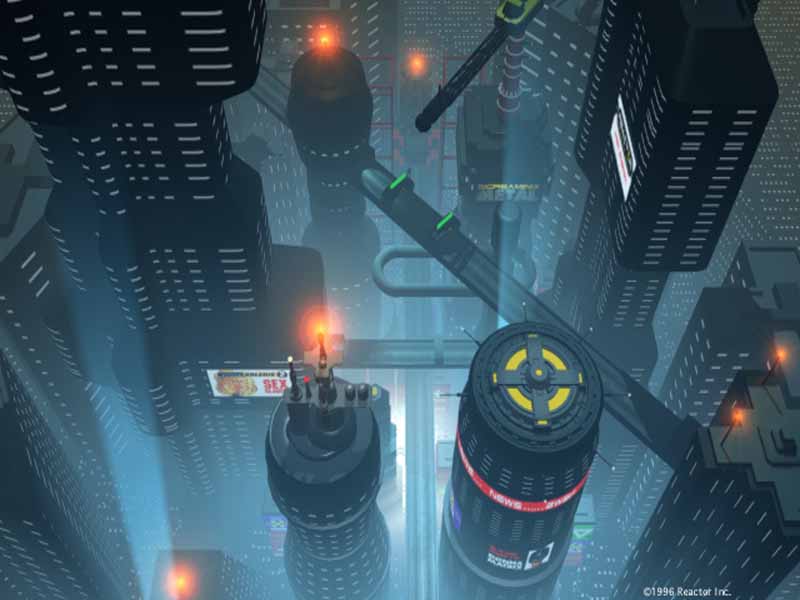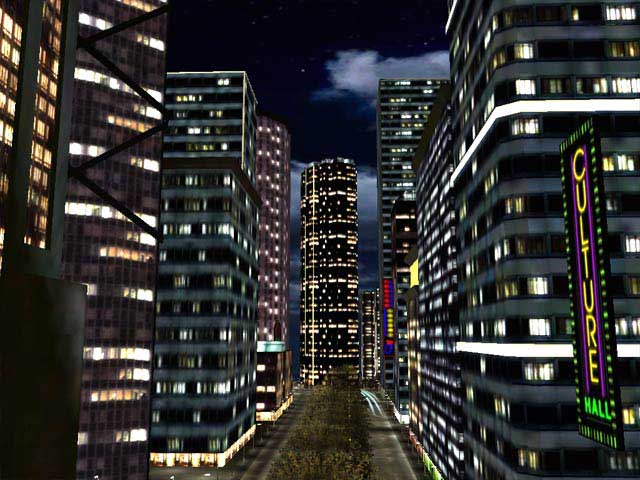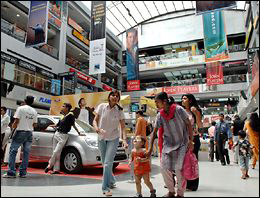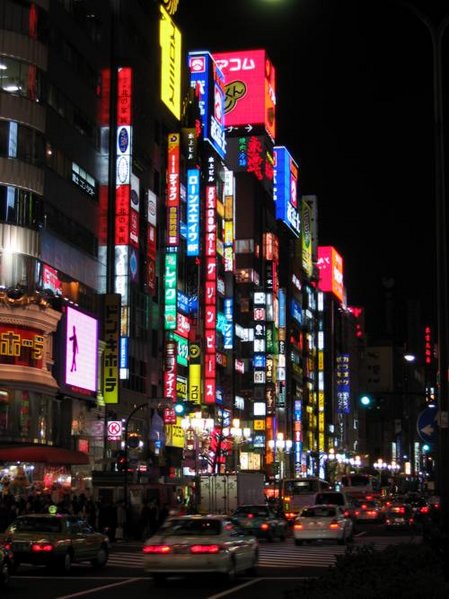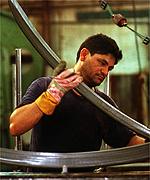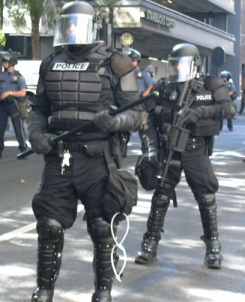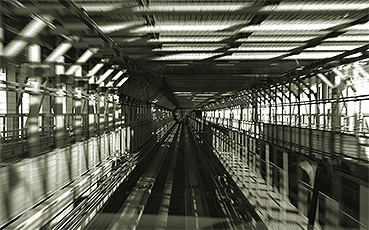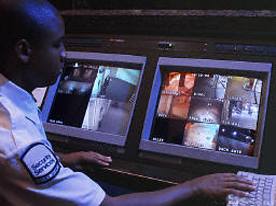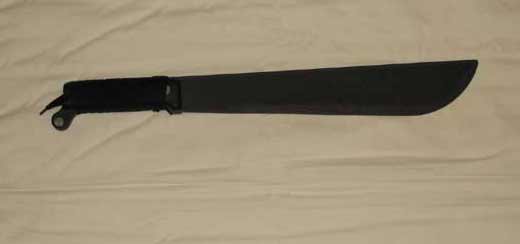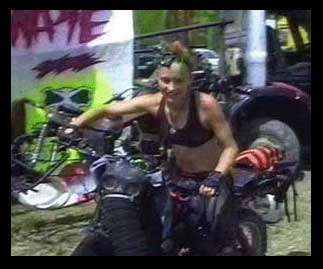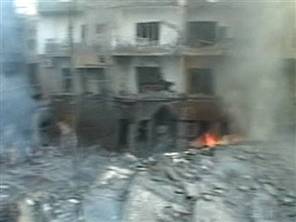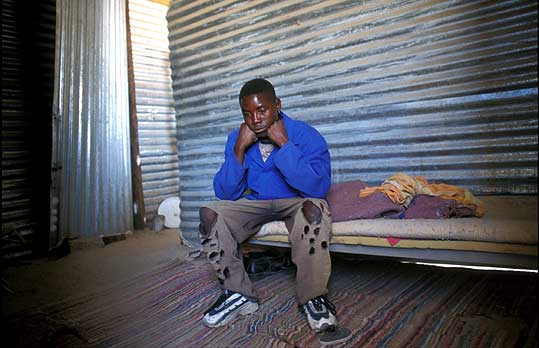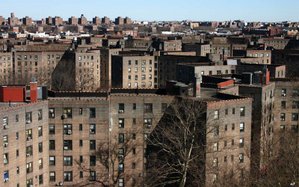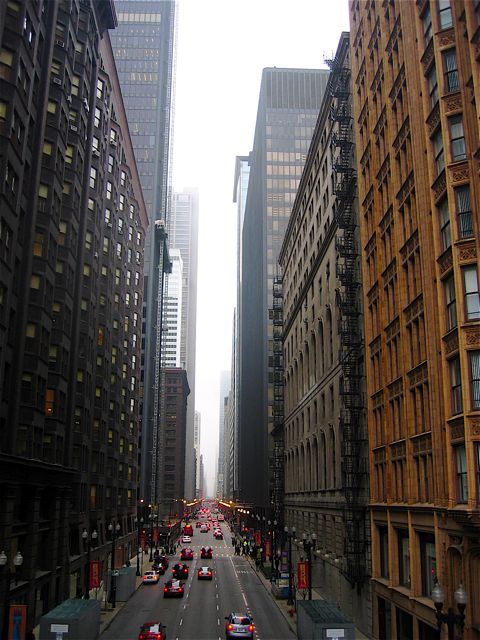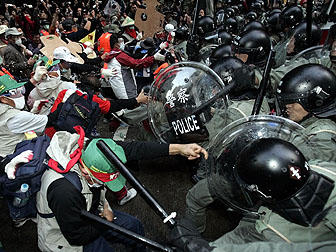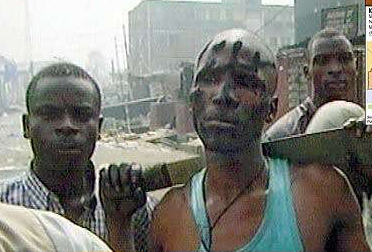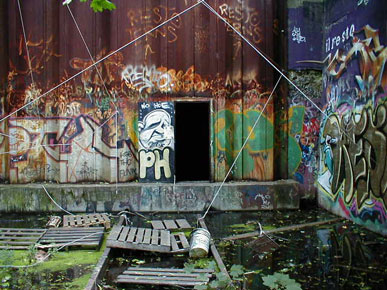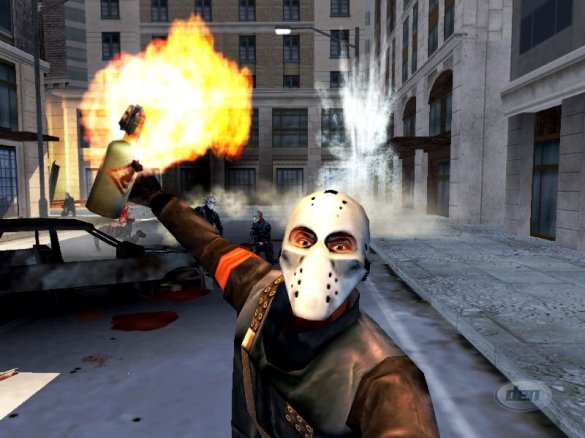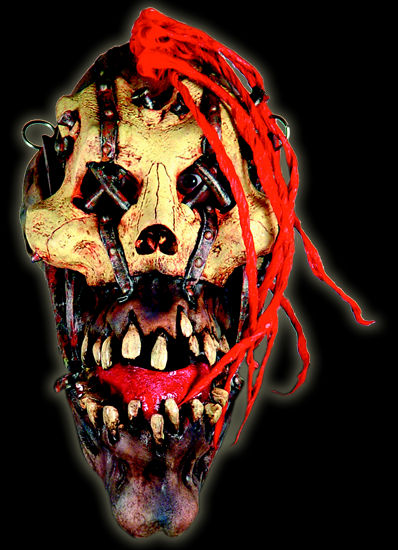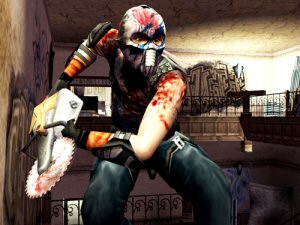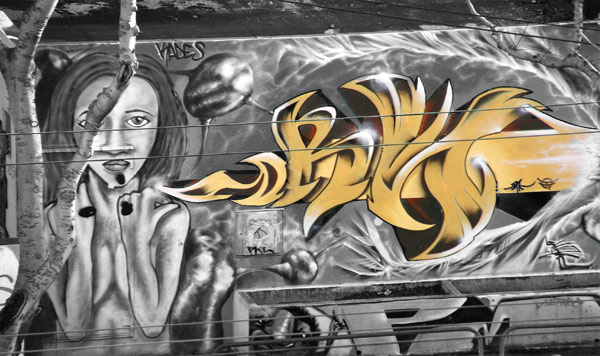Paradise City:Urban Geography
Contents
OVERVIEW[edit]
Paradise is officially divided into five boroughs, Central Borough, Eastside Borough, Northside Borough, Southside Borough, and Westside Borough. Each borough has its own police division, which further divides the area into precincts. Central Borough contains all of the most commercially important parts of Paradise, including most the central business district. North Borough contains neighborhoods of rich corporates. Eastside, Southside and Westside boroughs officially extend east, south and west of the CBD to the distant edges of the city. In practice, police presence ranges from intense near the CBD to non-existent in some of the more far-flung and anarchic parts of the city. To the average citizen, borough means little more than an excuse for a fight with a stranger. Much more important is the unofficial designation “zone”. There are four recognized “zones” – the Corpzone, the Projects, the Warzone and the Wastes. The Corpzone contains those parts of the city that are kept relatively well ordered by the corporations - including the mid-town and uptown sections of the central business district, the middle-class to upper-class neighborhoods, and the corporate slums. The Projects consist in vast tracts of drab government-subsidized housing, populated by the particularly poor and desperate. The Warzone contains those neighborhoods that are considered to be ruled by the gangs rather than by the police. Gang rule (like police rule) is always a matter of degree, but as a rule of thumb, an area is considered part of the Warzone if the police won’t stop gangers from having gunfights in the middle of the street. Naturally, there isn’t a lot of economic activity in a Warzone. The Wastes is the open desert beyond the city.
Each Zone is further divided into areas or types of area, depending on the borough and distance from the heart of the city. These areas are huge – most are the size of a 21st century city in their own right. Each area has its own unique character and rules for survival, which may vary from neighborhood to neighborhood even within an area. The Zones and their constituent areas are described below. It is important to keep in mind that each area has a complex internal structure that is not touched on in their general description. Residential areas in the Corpzone and Projects will have their own business districts, commercial areas, and workplaces, as well as anything else the government or corporation decides to build there. Gangland areas have little in the way of internal structure – they are a chaotic and ever-changing patchwork of turfs.
There are two maglev rail systems for public transport in Paradise – the “highline” which operates high above street level and the “subway” which operates below street level. The highline serves the central business district known as “the city”, as well as the prosperous neighborhoods of Eastgate, Westgate, and the entire Northside. The subway also serves “the city” (the CBD at the heart of Paradise), as well as the residential areas known as “the jungles”, “the lockdowns” and “the projects”. Passengers traveling between areas may have to pass through checkpoints where they are scanned for forbidden possessions.
THE CORPZONE[edit]
Nirvana[edit]
Nirvana: Nirvana is the home of upper management and the independently rich. Most residents are servants, though the rich mix with them as little as they can. PCs may not be from Nirvana and it must not be taken as a “Background”. Checkpoints: The walls around Nirvana are the most carefully protected walls in Paradise, and internally, Nirvana has far more checkpoints than any other region.
Police: Northside CityPol has a very high presence here. Every officer in CityPol wants to work in Nirvana. These are the police assigned to live among the affluent, and they appreciate their fortunate position. Of all police in the city, they are the best paid, best-supplied and least often killed in the line of duty. The police work hard to ensure that the residents are kept safe and happy. The officers are usually issued with weapons of LR 2 and above, typically submachine guns. Some residential buildings may be protected by corporate police licensed to carry weapons of LR 2 or above on the premises, typically submachine guns.
Gangs: The police have a zero tolerance policy regarding gangs and there aren’t many of them around. Those gangs that do form tend not to last for long before the police decisively take them in hand. Gangs here try their hardest not to look like gangs. They do dress alike if they wish to, since the currents of fashion often lead the children of the rich to dress alike, but they dress to look like normal members of society. None of them openly carry weapons and most of them carry no weapons at all, since being caught with a weapon here is likely to result in prison time. Any weapons they do have are likely to be improvised and easy to conceal, like knives and razors. Items of LR 4 or lower are rare and generally only carried if the gang is going to battle. The gangs are usually not much danger unless they catch you alone and attack you for fun. A few of the gangers are bored rich kids from this territory, but most of them are children of live-in servants.
Weapons: If residents see that you are carrying a weapon of any sort, they are liable to conclude that you are a criminal and call the police. As far as the police are concerned, your right to wear a weapon does not extend to anywhere in the Corpzone. It does not matter to them if you are actually breaking the law or not – you are clearly up to no good so they will just charge you with something to get you off the street.
Points of Interest: Paradise is ruled from the vast Arcology One, lying in the heart of Nirvana. Arcology One is a sealed building containing the richest and most powerful citizens in all Paradise, along with their families. There are few human servants in Arcology One – robots are more convenient.
The Burbs[edit]
Eastgate and Westgate[edit]
“Eastgate” and “Westgate” are the unofficial names given to the technical-class residential areas to the east and west of the midtown area – both of these areas constituting “the burbs”. Despite the moniker “the burbs”, there is little that is genuinely suburban about this area, which is mainly comprised of high-rise apartment buildings and is as urban an environment as is to be found anywhere in the city. Appropriately, Eastgate is located in the Eastside borough and Westgate in the Westside borough. There is not much practical difference between the two and only the relatively rare gangs care about the rivalry between the east and west sides of town.
Checkpoints: Like Nirvana, Eastgate and Westgate are each surrounded by well-protected walls. There are few checkpoints inside the areas – most of them at the entrances to buildings.
Transport: These areas are well served by the highline and contain many stations. There is a well-funded public bus system, though it is mostly used by menial workers. Anyone who aspires to the middle class would be ashamed to be seen using public transport and most of the residents travel by private car. Taxis are plentiful, clean and safe.
Police: High Presence. This is the second most desirable territory for a CityPol police officer. Every officer dreams of being transferred to the management neighborhoods and fears being posted anywhere else. The police here are well-paid and well-supplied and are much less likely to be killed in the line of duty than the vast majority of CityPol officers. They work hard to make sure that the residents can go peacefully about their business. The police are usually issued with weapons of LR 2 and above, typically submachine guns. Some residential buildings may be protected by corporate police licensed to carry weapons of LR 2 or above on the premises, typically submachine guns.
Gangs: The police have a zero tolerance policy regarding gangs and the territory has a much lower gang presence than the lower-class neighborhoods or anywhere beyond the Corpzone. Still, a few gangs do appear and they are usually of one of two distinct types. The locals or “turf gangers” seek to blend in with the citizens around them, just as gangs in the management neighborhoods do. They are generally young and are being supported by their parents – which is how they can afford to live in such a respectable neighborhood. The outsiders or “wheel gangers” invade from less prosperous neighborhoods, especially those on the Southside. They cannot get past the walls, but they can harass the middle-class communities that ring the outside. Most turf-gangers travel in cars and most wheel gangers possess bikes, but it is neighborhood, not mode of transportation, that determines whether a ganger will consider himself a “turf ganger” or a “wheel ganger”. Turf gangers may work to make money here (say by selling drugs or mugging people) but invading wheel gangers are generally just here to raise hell and get away before they get shot by the police. Because the local police have a zero tolerance policy towards weapons and are zealous in enforcing it, turf gangers prefer weapons that can easily be concealed, usually of LR 4 or above (typically knives or micro-pistols). Even if going to battle, such gangers rarely try to carry anything heavier than an LR 3 weapon, typically a holdout auto-pistol. The wheel gangers on the other hand are liable to come with weapons of LR 2 or above (typically auto-pistols or machine pistols). The turf gangers are more common than the wheel gangers, but are also considerably less dangerous.
Organized Crime: Organized crime is mainly under the control of whichever factions have influence in the Downtown area. Professionals go to a lot of trouble to appear to be respectable citizens and are very concerned about secrecy and security, even for organized criminals.
Entertainment: Most entertainment in these areas is the same mindless television that everyone else is watching – mostly sports, sensationalist crime news and pornography.
Sports: The most popular spectator sports in Eastgate and Westgate are, in order, American football, baseball, soccer, boxing and kick-boxing. “Combat sports” are illegal in Eastgate and Westgate, although it isn’t illegal to show them on television and they are popular viewing. There is much disagreement over exactly what constitutes a “combat sport” but at a minimum, the police ban anything involving weapons or a serious threat to life. Fencing is permitted, provided that the weapons are blunt. Racing is permitted, but not fighting while riding a vehicle.
Points of Interest:
Eastgate and Westgate are the respective homes of UPCE and UPCW, University of Paradise City at Eastgate and University of Paradise City at Westgate. These are the two premier universities in Paradise City and the only universities that are run by the government rather than by a corporation. Most of the students come from the Eastgate and Westgate areas. The two institutions cooperate very closely and there is little to distinguish them other than geography – most students choose which to attend based on which is closest. However, Eastgate does have a famously good medical school while Westgate’s Department of Advertising has an international reputation. There is a keen sporting rivalry between the two schools. The traditional outlets for this have been football and wrestling, but increasingly, athletes have been engaging in unofficial and illegal underground combat sports.
Castleview Estates is a gated community in Eastgate, open only to families with cloned children. It was establish to provide a refuge for such families if they felt like outsiders because of a cloned family member. Castleview is now a thriving and wealthy community and houses on individual lots sell for millions of dollars.
Weapons: The attitude of the locals and police to weapons here is essentially the same as it is in the management neighborhoods – carrying a weapon of any sort is a sign that you are a dangerous criminal and need to be taken off the street.
THE CITY[edit]
“The City” is the name given to the central commercial district of Paradise and is the jurisdiction of Central CityPol. The area roughly takes the form of an elongated oval, running north-south. The further north one goes, the more exclusive the businesses tend to be and the safer the streets are, while the further south one goes, the seedier the businesses tend to be and the more dangerous the streets are. This stretch is roughly divided into three areas – uptown, midtown, and downtown. Downtown snakes its way between the gated corporate sanctuaries to the south and finally peters out in the Southside projects.
Uptown[edit]
The uptown district is the northern end of “the city” and is the business hub of Paradise. The offices of the major corporations are here, as are the most expensive and exclusive stores.
Checkpoints: Cars must pass through checkpoints in order to enter the uptown area from midtown. Many buildings here scan everyone who passes through the door.
Transport: Uptown is served by the highline. It has a well-funded public transport system for the workers and a wide variety of shuttle fleets run by individual malls and shopping centers. Taxis are clean, safe and plentiful.
Police: Central CityPol presence is heavy and the officers are well-supplied, well-paid and highly professional. However, there is also a heavy presence of corporate police, often licensed to carry weapons in the street. Both city and corporate police are liable to be issued with weapons of LR 2 or above, typically submachine guns. Corporate police are unlikely to attempt to interfere with crimes that do not take place on corporate property, but are quite likely to let the city police know what is going on.
Gangs: The police have a zero tolerance policy towards gangs so gangs here are rare and usually don’t last for long. The gangers must blend in to the crowd, which means that they must look fairly affluent and cannot adopt dress that too clearly marks them as a unit. Since being caught with a weapon is likely to lead to jail time, gangers here usually carry none. When they do carry weapons, they are liable to be improvised and easily concealed, such as knives and razors. These gangers are rarely dangerous unless they catch you alone and mug you.
Organized Crime: Organized crime is mainly under the control of whichever factions have influence in the Downtown area. Professionals go to extreme lengths to appear to be respectable citizens and are paranoid about secrecy and security, even for organized criminals.
Points of Interest: The malls and shopping centers of Uptown can extend for miles and include thousands of businesses. The prices may be outrageous, but you can get almost any legal thing you want here.
Weapons: If you are carrying a weapon but not wearing a uniform, then both city and corporate police will assume that you intend to commit crimes and need to be taken off the street.
Midtown[edit]
The midtown area mainly services the technical-class residents of the Eastgate and Westgate “Burbs” that surround it. It contains businesses and stores of interest to the middle classes as well as the offices of small corporations that are not affluent enough to purchase real estate in the uptown area. The area is generally regarded as respectable, boring and relatively safe – gangs do sometimes drift up from downtown (or ride in from the Southside) but Central CityPol tends to make short work of them.
Checkpoints: There are few checkpoints here, although a number of buildings will scan everyone who enters.
Transport: The Midtown transport system is essentially the same as the Uptown transport system, though with fewer luxury options.
Police: The midtown area is highly profitable real estate and the Central CityPol officers here are plentiful, vigilant and well-supplied. Because the important corporate offices are further north, there are relatively few corporate police here and they are rarely permitted to carry anything more powerful than an LR 3 handgun, typically an auto-pistol. The police here see themselves as holding the line against the relative anarchy of the downtown area – they are generally polite to respectable looking citizens, but will be suspicious of those who look poor or otherwise disreputable.
Gangs: Gangs may be tolerated by the police if they stick to the back streets, pay sufficient protection money, and don’t cause too much of a disturbance. However, they are quickly dealt with if they stray onto the main roads, so gangs who want to claim those areas as their turf need to be careful to disguise themselves as ordinary citizens. Obvious weaponry is not tolerated anywhere and most establishments have well-maintained metal detectors in place, so gang weaponry tends to be small and easily concealed. Gangs going to war may carry heavier arms, typically auto-pistols and shotguns. Fully automatic weapons are sometimes used, but traditionally the police will kill any ganger they catch with such a weapon, which tends to discourage the practice.
Organized Crime: Organized crime in is mainly under the control of whichever factions have influence in the Downtown area. Professionals go to a lot of trouble to appear to be respectable citizens and are very concerned about secrecy and security, even for organized criminals.
Points of Interest: If a crime is committed in “The City” or in Eastgate or Westgate, it is liable to be tried in The Justice Complex, a hulking stone network of courthouses and administrative offices in the Midtown area. Accused prisoners are generally held Downtown (often for a long time), but are brought here for a swift and efficient trial. Middle class citizens famously get much lighter treatment than working class citizens, although the complex is known for having a generally punitive attitude. Central CityPol officers with sub-machineguns and gyroc pistols stand guard at regular intervals around and inside the complex.
Weapons: If you are carrying a weapon but not wearing a uniform, then the police will assume that you intend to commit crimes and need to be dealt with. Respectable looking citizens may simply be asked to return home and lock their weapon away. Disreputable looking citizens are liable to be arrested.
Downtown[edit]
The Downtown area is the “market” at the heart of Paradise, a bright neon wonderland devoted to trade in all of its forms. While the Uptown area to the north contains most of the corporate offices, it is in the Downtown area in which most money actually changes hands. The streets are packed with people and are lined with stores, bars, casinos, and entertainment venues.
Checkpoints: There are no regular police checkpoints here, although many business put restrictions on weapons and some businesses scan everyone who enters the building.
Transport: Downtown is served by both the Highline and the subway. The rudimentary public bus system is supplemented by a wide variety of private bus and taxi companies and it is rarely difficult to find a convenient ride to wherever you wish to go. Private cars often choke the roads, extending travel times.
Police: There are more opportunities for a police officer to make money Downtown than anywhere else. Local businesses bribe Central CityPol officers to protect business, which the officers do by keeping the peace. The police share the streets with the gangers, but leave no doubt about who ultimately rules here. Central CityPol accepts that gangers are going to kill each other, but will not allow fighting in important public places and will arrest any citizen found in possession of a weapon of LR 2 or below. Generally, gangers toe the line, but not entirely, and Downtown remains a dangerous place for officer and citizen alike. This is especially true in the seedier and less profitable sections of Downtown, where CityPol protection is less enthusiastic. Police officers here are usually issued with submachine-guns, auto-pistols, and stun batons. The department is well supplied with any other weapon of LR 2 and above.
Gangs: Gangs are drawn to the Downtown area like flies to crap. Of all territories, it promises the most money, the most fun, and the best chance to find a weaker gang to attack. Central CityPol has accepted that it can’t get rid of the gangers and the gangs are flamboyant and wear their weapons openly. Gangers on the street generally carry an auto-pistol and a backup melee weapon, but there is considerable variation. Gangers going to a battle are likely to be carrying illegal weaponry, typically shotguns, but often machine pistols and submachine guns.
Organized Crime: Downtown is the hub of illegal business in Paradise City and the most profitable place for a criminal organization to establish itself. Competition is fierce here and territory is less often measured by blocks or rackets than by businesses and buildings – an organization might count its assets as two large advertising agencies, three casinos and a strip club. Different criminal groups specialize in different businesses, but the most powerful bosses are likely to have diverse holdings. The culture of organized criminals is patterned on the culture of the honest corporates that they pretend to be, and organizations are usually run like businesses, if unusually dangerous and violent businesses. Family usually matters a lot less than competence and it is rare for an organization to share any particular ethnicity – those that do are generally the local representatives of foreign bosses.
Entertainment: Downtown is the main provider of news and entertainment for Paradise City. More successful television stations, record labels and entertainment venues are found here than in all other parts of the city combined. The popular news programs are effectively reality shows, providing footage of crimes and accidents, mostly those happening in Paradise City itself. Corporate interests determine which stories get play on the major stations and which do not and the news is usually spun in whichever direction the owning corporations require. Most popular music is generic mindless pop, commissioned by corporations to meet the carefully studied needs of teenagers. However, Downtown offers almost everything somewhere, musically and otherwise.
Sport: Almost any sport can be found being played in Downtown somewhere. However, traditional games like football and baseball are more frequently played in the residential areas, while events Downtown tend to be more exotic. Races and combat sports are particularly popular with the crowds. The more respectable combat sports venues play by “Takanawa rules” as originally laid down by the Takanawa corporation for the Takanawa arena. The rules stress that the safety of the athletes must always be the first concern. Protective sports equipment must always be worn and athletes with cyberware should rarely or never matched with athletes without cyberware. There are many restrictions on what may and may not be done in combat. The rules require that only melee weapons may be used and they may not have sharp edges or points. Striking to kill or maim is forbidden as are attacks to the nose, vitals and groin. Vehicles may be ridden in while fighting but may not deliberately be driven into anyone or anything. Even with these rules in place, death and injury are inevitable, but an honorable venue is expected to sue any athlete who deliberately kills, maims or seriously hurts another competitor. On the street, the phrase “Takanawa rules” has come to mean “fair”. Less respectable venues have more brutal rules or no rules at all. The police will generally tolerate anything that is “Takanawa rules” and may tolerate more extreme sports if the money is right.
Points of Interest:
The Downtown area is home to Paradise City International Airport, by far the largest airport in the city. All weapons are banned on airport property. Around the airport is a ring of businesses dedicated to providing visitors with the legendary pleasures of Paradise – hotels, bars, brothels and drug dens compete to satisfy all desires, tastes and budgets. The locals call this ring “Sinland”.
The Takanawa Arena is the single largest entertainment venue in Paradise City. It is a huge coliseum, mainly used for sporting events, bubblegum pop concerts and sales events. Not all of the music is bubblegum pop and any music with a sufficient following is liable to be heard here eventually.
Channel 12 News is the most successful and most watched news station in Paradise City and has an even greater number of viewers worldwide. It feeds the viewers a steady diet of sensationalized crime stories, sports results and celebrity scandal. Police are never criticized on Channel 12, but are held up as heroes who protect the city from the evil elements who seek to hurt their fellow citizens. Criticism of corporations is carefully muted. Analysts on Channel 12 generally conclude that greater police powers are required to combat crime and terrorism in Paradise City. Channel 12 News is a subsidiary of the Yosho-Noshi corporation.
Number 78 Collins Street houses Central Citypol headquarters. It is from this skyscraper that Downtown is ruled, if loosely. The profits are enormous and the corruption extreme. Contrary to urban myth, relatively little of this money comes from organized crime – it is the corporations who are the truly generous donors.
Weapons: About one in ten citizens carry visible weapons in the street. Central CityPol officers frowns on the practice, but will tolerate a handgun (LR 2+, typically auto-pistols) carried in a holster. CityPol will immediately arrest anyone found with a longarm or with a weapon of LR 2 or below, even in the seedier parts of town. Most downtown businesses require that weapons be left at the door and the more respectable and prosperous the business, the more likely that the request will be made. Bars famously have enacted a variety of rules for the sake of safety and flavor - rules run the gamut from a total ban on weapons, to a ban on anything but medieval Japanese weapons, to a rule that only those packing a handgun will be permitted to enter.
Smuggling: Citizens may enter and leave the Downtown area without being scanned by the police. In fact, police scans are rare in the territory and generally only occur if an officer is already suspicious. The system is not effective in keeping anything much out, although military hardware, such as assault rifles, is generally felt to be too hard to hide. Private establishments often scan to keep weapons out, although security measures vary greatly.
THE CORPORATE SANCTUARIES[edit]
The sanctuaries are a scattered ring of gated communities that roughly encircle the city and burbs, though there are no sanctuaries in the northern part of the city. These communities are intended for the poor semi-educated workers employed by major corporations. The corporations ultimately own and run everything within the walls. City police rarely venture inside – it is up to the corporate police to keep order here. In theory, the walls serve to protect the communities from the violent world outside. This works up to a point – corporate security has become very adept at preventing weapons from being smuggled in and there is no question that people are safer inside the walls than outside. On the other hand, these citizens are not particularly valuable corporate assets and the corporate police don’t expend a lot of effort to protect them from local predators. At their best, these communities are “lockdowns”, corporate police states. At their worst, these communities are “jungles”, crumbling anarchic ghettoes populated by the least valued of human assets. While each sanctuary is unique, sanctuaries of the Eastside, Southside and Westside tend to have certain features in common, as detailed below.
The Lockdowns[edit]
Eastside Lockdowns: “The Habitats”[edit]
The corporations go to great trouble to keep order here and there is very little personal freedom. Citizens spend a great deal of their time physically locked inside their dwellings in order to keep the streets safe and searches for weapons and drugs are commonplace. Passes are required to enter or leave these communities, although it is significantly easier for an outsider to obtain a pass that will allow them to visit than it is for a resident to obtain a pass that will allow them easy access to the outside world – usually, an outsider can gain at least a temporary pass for about $10 a visit. Despite these measures to enforce control, the frustrated citizens of the habitats are famously violent. Because of all the security measures, there is a lot of profit to be made from drug trafficking here and gang warfare for drug-selling territory is a common event.
Transport: The Habitats are served by the subway system that runs through most of Paradise City. The subway system is not extensive, but there will be at least one station in each walled community. The corporations generally fund efficient bus systems to make sure that their employees can get to work on time. In some neighborhoods, buses may require that identification be shown demonstrating that the passenger is a corporate employee. There are also corporation-run and/or corporation-sanctioned taxi services, all heavily policed.
Police: The corporate police have great authority here and are a class apart from the ordinary citizens. Anyone who wants to do regular illegal business here has better be cutting the local cops in, or they are looking for trouble. Police generally carry stun batons and sub-machine guns.
Gangs: The gangs are powerful here and, as long as the police get their cut, effectively rule the streets. Tattoos and fashionware are common ways in which gang-members identify themselves. Even gang-members will rarely carry weapons unless they are going to war or expecting trouble. Weapons that are used tend to be improvised from tools.
Organized Crime: Despite the widespread poverty, The Habitats are valuable territory. Corporate prohibitions drive up the price of contraband and there is a lot of money to be made supplying people with things that they cannot obtain through legal channels. The gangsters here have a reputation for pragmatism, with little concern for the ideals of honor and face that gangsters elsewhere at least pay lip service to. Old friendships are less important than profits and there is a bewildering network of constantly shifting alliances as the groups compete.
Entertainment: The corporations have failed to control the people’s access to the internet and the locals enjoy whatever they want – mostly mindless music, pornography, game-shows, sports and saccharine dramas.
Sports: American football and soccer are religions and are the cause of many a brawl between opposing fans. Combat sports are also popular, particularly events taking place in The Habitats itself. Different corporations impose different rules, but will generally allow anything that doesn’t involve the use of weapons or the destruction of corporate property. The most popular full-contact sports are boxing, karate, kick-boxing and muay-thai. There is great interest in more extreme combat sports from elsewhere and footage from almost any sporting event in the world is easily available on the internet, despite periodic attempts by the corporations to ban it. Illegal “medieval” events involving melee weapons are often held in the Habitats and are popular.
Points of Interest:
The Crystal Cathedral is a huge and impressive steel and glass church. It belongs to Pastor Bill Ireland and it is from here that he broadcasts his television program “The Word of Hope”. Pastor Ireland has an international following and has accumulated many millions of dollars. His local cult is extremely loyal and he effectively controls the blocks around his church as his personal fife. Pastor Ireland teaches that forgiveness is available to anyone who repents, but he is also heavy on the punishment of unrepentant sinners.
The towering apartment complex Cherry Hill is host to a community that devotes itself to physical and particularly sexual pleasure. Apartments are only sold to those who swear abstinence from drugs, alcohol and religion. The community is disliked by local gangs and police alike and there have been incidents of violence from all sides. Some radical elements of the community want to see alcohol banned throughout their entire Habitat, which has lead to conflicts with other communities.
Weapons: Citizens are strictly forbidden to possess weapons of any sort here. Even tools are forbidden in residential areas, unless special permission has been granted. Knives, bats, chains, even loose lengths of pipe require a special license that is almost never granted. Violent inhabitants find it almost impossible to obtain weapons from the outside, but often turn to making their own from hidden materials. Homemade clubs, knives, and hand axes are all common among criminals, but bulky weapons like swords, battle-axes and considered to be too hard to hide. Periodically, a resident manages to machine simple one-shot handguns – famously, these guns show up easily on police scanners and sometimes explode in the owner’s hand.
Cyberwear: Cybernetic weapons and cybernetic body cavities (such as flesh holsters), are strictly forbidden, as is any cyberware that makes the user harder to detect.
Smuggling: All citizens wishing to enter the territory must pass through checkpoints where they are scanned for illegal items and cyberwear. The system is effective in detecting drugs and while there are plentiful drugs available in the area, they are locally produced and famous for their negative side-effects.
Southside Lockdowns: “The Crypts”[edit]
These lockdowns are probably called “the crypts” due to the extensive subways that honeycomb them. Such public transport is necessary as private ownership of vehicles is usually banned for residents. The locals tend to be highly insular, possibly because of sheer lack of mobility. They don’t use the term “the crypts”, don’t consider themselves to have anything in common with their neighbors and generally do not see themselves as part of any territory that extends beyond their own neighborhood.
Police: The corporate police care little for protecting the local citizens and extended families form into clans for mutual protection. While traditional street gangs are known here, after the police, it is these clans who hold most power on the streets.
Gangs: Much of the ecological role of gangs has been taken over by the clans here, but youths with no family (or no inclination to follow their family’s rules) do form more traditional gangs. The can rarely contest with the clans for turf, but will engage in hit and run operations to get what they want, or take control of territory that the clans don’t particularly want. Gangs will generally carry melee weapons, ranging from flick-knives to katanas, depending on how well the neighborhood is policed.
Organized Crime: As in any lockdown, territory is valuable here, since heavy corporate prohibitions make illegal supply very profitable. Organizations tend to be run along family lines and the distinction between a clan and a criminal gang is often impossible to draw. Notions of honor and loyalty to friends and family are central to the culture of most of these groups, although there is more hypocrisy and lip-service to these ideals than genuine commitment. It is usual for organizations to present themselves as benefactors of the community, protecting them from abuse by criminals from outside. Territory is divided geographically, rarely with divisions being made by racket except in business districts.
Entertainment: The residents enjoy all the entertainments of the outside world through their internet connection.
Sports: Sports in general are popular here, although American football is particularly adored, often leading to brawls between fans. Combat sports are an integral part of sports culture and events are frequently held. The rules depend on the disposition of the ruling clan. Generally, the clans insist that nothing must happen that would offend corporate security, such as the use of weapons. Dirty street-fighting tactics are generally allowed. Some clans hold illegal events involving unblunted melee weapons.
Points of Interest:
“Cloud City” is the name the locals give to a stretch of the Crypts that is so polluted by smog from local Durocorp factories that the air is often not breathable without a gas mask and visibility is often reduced to a few feet. The many workers who live in the area take great care to make sure that their windows are properly sealed. As disgusting at the climate is, it provides some protection from surveillance and is a favorite haunt of people who need to hide, people looking to make a secret deal, or people looking for a victim.
Taylor Field lies at the heart of Paradise City’s obsession with American football. The most financially successful football field in Paradise City, it hosts city, state and sometimes even national championships. The merchandising empire that has been set up around Taylor Field is enormous and fan obsession there is sometimes hysterical. People rarely take families to Taylor Field anymore since mob violence between supporters of different teams has become so endemic. The owners certainly don’t seem to do much to discourage the violence, leading to speculation that they like it because it makes good television.
Weapons: It is illegal to bring weapons into these neighborhoods and generally very difficult to do, although a low-tech melee weapon can usually be bribed in for $10 or so. Citizens are forbidden to carry weapons in the street. Residents are, however, permitted to keep low-tech melee weapons in their homes for home defense. In practice, this means that most adults hide a small melee weapon, such as a knife, on their persons when they go out in public, and keep larger melee weapons, such as clubs, axes and machetes, in their home. When a community is going to a battle, they are liable to take their large weapons with them in defiance of the law. The police tolerate such attacks up to a point, as long as damage to public property is kept to a minimum.
Cyberwear: Armor that does not look natural is forbidden, as is any weapon that cannot be retracted, and any ranged weapon. Such cyberwear is rarely found in the territory.
Smuggling: All citizens wishing to enter the territory must pass through checkpoints where they are scanned for illegal items and cyberwear. The system is not effective in detecting drugs.
Westside Lockdowns: “West Hollywood”[edit]
These lockdowns are famous for the great proliferation of police and corporate security cameras – the streets and public places are carefully monitored, as are many work places and common areas. Police manpower is not particularly great and the cops generally have little interest in preventing violence that is not causing public disruption or destroying property. Still, the system does keep some kind of a lid on the destructive tendencies of the locals. West Hollywood is the most economically successful of the lockdowns - pay is low and goods are scarce, but the relative order is good for business.
Transport: The subway system serves these communities. It is not extensive here, but there is almost always at least one station in each gated community. The corporations generally provide bus services to make sure that their employees arrive at work on time. There are also corporation-owned taxi services. It is standard for both buses and taxis to require that identification be shown, with all information being automatically forwarded to corporate security. There are illegal pirate taxi services that do not require identity to be shown, but they are expensive.
Police: The police accept that worthless citizens will feel the occasional need to rob, assault or kill one another. They are not likely to interfere if they can pass an interaction off as a “private matter”, although they will take action if illegal activity begins to look like it will cause general destruction or disorder. Ironically, police corruption is relatively low on the street level in West Hollywood, since the officers themselves are frequently effectively under surveillance.
Gangs: The gangs of West Hollywood usually don’t wear identifying insignia, or choose means of identifying themselves that are not blatantly obvious to a security camera. Even gangsters aren’t usually carrying weapons and weapons that are used are liable to be improvised. Gangers usually are quite stealthy and favor quick hit and run tactics.
Organized Crime: There is little centralization of organized crime, which is mostly a patchwork of tiny dictatorships. The turf is profitable due to heavy corporate prohibition, but not many people are actually getting rich, since the eternal warfare between mistrustful, ambitious and uncooperative neighbors gets in the way or well-organized business. Gangster culture revolves around cults of personality directed at local leaders, usually based more on fear and flattery than genuine feelings of admiration.
Entertainment: The locals effectively have unlimited access to the internet, despite constant attempts by the corporations to stamp it out. They choose a steady diet of sports, pornography and reality television.
Sports: The locals enjoy all of the major national sports, particularly American football, leading to frequent brawls between fans. Combat sports of all kinds are a popular television choice. Different corporations have different rules about what kinds of combat sports events they will permit to actually take place on their property. Many have a simple ban on all combat sports, some will allow boxing and nothing else, while others permit any vicious brawl as long as no weapons are involved. Illegal underground events involving knives, chains and other improvised weapons are often held. The locals have a peculiar love of altering the rules of older sports such as football, baseball and soccer, to allow for more violence.
Points of Interest:
The McDonald-Douglas-Nguyan Park is the name given to a walled community belonging to the McDonald-Douglas-Nguyan corporation. The factories here produce vehicles that are exported all over the world. They are particularly famous for their military aircraft, but also produce a wide variety of civilian vehicles. The corporation holds regular tests in the wastelands to see how their products hold up under combat conditions.
“Shit Street” is a complex network of old sewers that humans have taken over to use as homes and small businesses. There are many disadvantages to joining the community that lives in Shit Street, but it does give you somewhere to get away from the constant surveillance. The heart of Shit Street is well supplied with electricity, fresh water and internet connections – conditions in peripheral pipes may be more primitive. More than one gang has attempted to claim the Shit Street colony as territory, but the inhabitants prove to be extremely tenacious when defending their home.
Weapons: Citizens here are forbidden to carry weapons. Weapons that are available are almost all improvised – knives, tools, pipes, chains, and so forth. Weapons are never worn openly in the street, and are only carried if they are intended for immediate use. Bats are forbidden and generally unavailable, as is any other item of sporting equipment that could be used as an improvised weapon. There are many places where a citizen may not even carry a tool that might be used as a weapon, such as a screwdriver.
Cyberwear: Cybernetic weapons are forbidden as is armor that is not natural in appearance.
Smuggling: All citizens wishing to enter the territory must pass through checkpoints where they are scanned for illegal items and cyberwear. The system is effective in keeping drugs from entering the neighborhoods. Locally made drugs are available for the streetwise, but are famous for their negative-side effects are often lead to arrest.
The Jungles[edit]
Eastside Jungles: “The Asylum”[edit]
When most citizens of Paradise think of the Asylum, they think of drug-crazed lunatics hacking at each other with medieval weapons. That doesn’t truly represent the average citizen of this area, but it isn’t a bad caricature of the gangs who the police allow to rule the streets. The police manage to keep most weapons of LR 3 and below out of the community, but have failed to prevent an ongoing explosion in drug use, despite desperate attempts to contain it, and the Asylum sees far more use and addiction than is found elsewhere in the Corpzone. Many of the citizens seem to have only a tenuous connection to reality, and the locals are known for being strange and unpredictable.
Transport: The subway system serves these communities. The system is more extensive than in most lockdowns, but the gangs have taken over a lot of the less important stations, often rendering them effectively unusable. There will almost always be at least one useable station in each gated community, however. The corporations pay for a minimal bus system so that the residents can get to work and to shopping. Buses are often late and in poor repair. Corporate taxi services are usually restricted to corporate employees. Private taxi services are usually allowed and service ranges from excellent to horrific, largely depending on price.
Police: The police here are not hired by the city, but the corporations who house unskilled workers in the area. The local inhabitants are not considered particularly valuable by the corporations they work for, and the corporate police do not go to great trouble to protect them, nor their environment. Still, they work hard to keep the community clear of drugs, firearms, and anything else that they think will be trouble. They fail miserably to keep the drug trade under control and drugs are extremely easy to find here. They have had more luck keeping the area free of unacceptable weapons. The corporate police themselves are typically issued a gyroc pistol and an auto-pistol.
Gangs: The gangs do a good trade in drugs and are relatively prosperous. They wear their colors in the open and often dress flamboyantly. In the street, they will always be armed with melee weapons of some kind, and some gangs all use similar or identical weapons. Combat against other gangs for territory or prestige is common and spectacular, but the gangers don’t dare take on the corporate police.
Organized Crime: Organized Crime organizations effectively do what they like here, provided that they don’t tread too heavily on the toes of the corporations. Groups are often large and their control is often so complete that they form the closest thing to a government that the locals have. Structure is usually feudal, with the most powerful bosses ruling over numerous semi-autonomous local barons. Obedience within the organizations is given under the open expectation of being rewarded – a boss who does not reward sufficiently may be accused of being “unfair” and betrayed on those grounds.
Entertainment: The locals have effective access to the entire internet, so watch mindless television to their hearts’ content.
Sports: Sports are extremely popular in the Asylum, particularly baseball, American Football and Soccer. Combat sports events are frequently held. Corporate police will usually tolerate anything that doesn’t involve illegal items like firearms and turn a blind eye to deaths. The most popular events are matches between gladiators armed with melee weapons.
Points of Interest:
“Paris” is a neighborhood on the boundary of the Habitats. The Yosho-Noshi corporation has invested in real estate in the area and is working to transform the neighborhood from an anarchic jungle to profitable lockdown. Housing prices have correspondingly risen and unskilled workers are being displaced by semi-skilled workers. The “Parisites”, as they call themselves, resent the invasion of what they think of as their land and the constant introduction of new laws and regulations. While there have been some attacks on new residents, most of the rage has been directed at the Yosho-Noshi corporation itself. The violence and destruction is escalating.
“The Larp” is the name given to a ring of apartment blocks in the south-east corner of the Asylum. People gather here to role-play and/or kill each other, much to the residents’ horror. Originally, the Larp involved innocent medieval and fantasy role-playing, with occasional slightly-dangerous mock-combat. Inevitably, new players were attracted to the game and transformed it into something much deadlier. People come here to fight now. Combat is in earnest, and is frequently lethal. Most do choose a character of some kind, but others don’t bother, and some come just to mock and kill the role-players.
Weapons: In theory, all weapons are illegal. In practice, the police aren’t going to get upset about melee weapons of LR 4 or above and such weapons are openly worn in the street. Most citizens will at least carry a knife on their hip. Carrying a larger weapon may lead to challenges from local toughs if they don’t think the character knows how to use the weapon properly. Just like everywhere else, a weapon carried in the hand is a sign of violent intentions.
Smuggling: All citizens wishing to enter the territory must pass through checkpoints where they are scanned for illegal items and cyberwear. In practice, low-tech melee weapons, even cybernetic versions, may be bribed through at around $5 a weapon. Inside the territory, the police frequently scan citizens for weapons of LR 3 or less. Discovery will lead to immediate arrest (and if the weapon is LR 2 or less, prison time). On the other hand, melee weapons (excluding high-tech toys like vibro-blades and mono-whips) are tolerated to the point that even large and exotic weapons are worn openly in the street.
Southside Jungles: “The Southside Jungles”[edit]
Like all jungles, the Southside Jungles are economically depressed and the corporations who own these residential areas care little for the welfare of the average inhabitant, who individually is of almost no value to them. Because of the loose enforcement of traffic laws, the Southside Jungles are known as a particularly dangerous area to go driving. The streets attract go-gangers and everyone else who doesn’t feel like obeying traffic rules.
Transport: The roads are filled with cars and motorcycles driving too fast. For whatever reason, the gangs here seem to hate public transport and have a particular love of targeting subway stations and buses. It is possible to get in and out of the Southside Jungles on the subway, but the subway system has been damaged to the point where it isn’t much use for getting around internally. There are few buses left and those that the corporations can be bothered to provide are armored and come with security personnel. Private taxi companies flourish, since many people, particularly outsiders, are simply too afraid to take to the roads.
Police: The police here are not hired by the city, but the corporations who house unskilled workers in the area. The local inhabitants are not considered particularly valuable by the corporations they work for, and the corporate police do not go to great trouble to protect them, nor their environment. Taking a page from the South CityPol cops in the neighboring government projects, they do not even bother to enforce traffic laws unless property is actually damaged. The officers are usually issued a submachine gun, an auto-pistol and a stun baton.
Gangs: The lack of traffic rules has lead to a proliferation of go-gangs in these neighborhoods, much as it has elsewhere on the Southside. Firearms are generally unavailable in the enclave and the gangers use melee weapons instead – especially weapons that can be cheaply improvised or can be used while riding a motorcycle. Bats, chains, pipes and even swords are commonly used.
Organized Crime: Organized Crime organizations effectively do what they like here, provided that they don’t tread too heavily on the toes of the corporations. Groups are often large and their control is often so complete that they form the closest thing to a government that the locals have. Structure is usually feudal, with the most powerful bosses ruling over numerous semi-autonomous local barons. In theory, strict obedience is always owed from inferior to superior. Duty is owed upwards to the boss, never downwards to the subordinate. In theory, the entire Southside Jungle is ruled over by the Chou family, but the Chou are figureheads and have not had real political power in generations.
Entertainment: The locals have access to the entire internet and generally spend their time passively sucking in mindless entertainment and commercials.
Sports: The locals enjoy all major sports, but have a particular love of racing and unarmed combat. The Southside Jungles houses the most prestigious race tracks in the city and hosts national and international competitions. The locals avidly watch boxing and kick-boxing events from all over the world. When they hold unarmed combat events of their own, they rarely restrict what fighting style may be used. Each event will have its own rules regarding what constitutes “dirty fighting” – some forbid nothing at all.
Points of Interest:
The Children of Michael are a large Christian religious cult who have sworn not to use technology invented after the year 2000 AD. Their cars and apartments must be specially made and are purchased by them from the cult. Over the years, the cult has eased its attitude regarding some technology - modern computers are now allowed as is the use of modern medicine, recreational drugs and weapons. The Children believe that only cult members will be saved on the day of judgment and are not shy about saying so, which has earned them many enemies. While no major denomination has told its adherents to attack the Children, numerous individuals have done so, leading in some cases to escalating reprisals against rival churches.
Weapons: The police care enough about public order to arrest anyone found in possession of a ranged weapon, or any weapon of LR 3 or less. Melee weapons, while technically illegal, are semi-tolerated - they are quite likely to be confiscated, but it is not likely that charges will be pressed simply for possession. Most citizens carry no weapons at all and weapons that are carried tend to be easily concealed weapons of LR 4 or above.
Smuggling: All citizens wishing to enter the territory must pass through checkpoints where they are scanned for illegal items and cyberwear. It is very difficult to sneak a weapon of LR 3, (such as auto-pistols) or above into the territory. Cybernetic weapons that are neither ranged nor of LR 3 or less may generally be bribed in for $40 per weapon. The system is not effective in detecting drugs. Within the territory, if corporate police find you with a weapon of LR 3 or above, you are likely to end up in prison, whereas something less lethal will simply be confiscated.
Westside Jungles: ”The Firepits”.[edit]
The Firepits, as the name suggests, have been repeatedly gutted by fires set by destructive residents. The area, mostly built of a cheap flammable plastic, is riddled with burned-out areas, sometimes stretching for blocks. There are still plenty of unskilled corporate workers living here, and there has been some effort to rebuild areas that have been destroyed. However, too many of the locals seem set on destroying anything that they can get their hands on and most of the corporations who own land here find that it isn’t worth their while to try to rebuild.
Transport: Transport facilities vary widely depending on the area. In zones where the corporations manage to keep some kind of order, there are workable bus systems and subway stations. There was once an extensive subway network here, but so many stations have been destroyed that the subways are of little use apart from getting into and out of the Firepits. In areas where the corporations have failed to keep order, residents have no services at all.
Police: The police here are not hired by the city, but the corporations who house unskilled workers in the area. The local inhabitants are not considered particularly valuable by the corporations they work for, and the corporate police do not go to great trouble to protect them, nor their environment. They do their best to keep the vandalism and destruction in check, but they are badly under-funded and under-staffed. The corporations do maintain the outer wall very carefully, to ensure that residents may be passed through check points and scanned for weapons (and especially explosives). There are plenty of streets where police just do not go, if only because the buildings are so trashed that they are not worth trying to protect. Officers here are typically issued with a submachine gun, an auto-pistol and a stun baton.
Gangs: There is not much money to be made here, although the gangs do a reasonable trade in drugs. Still, for many of the residents of the Firepits, there isn’t a lot else to do than fight – most of the legitimate entertainments were driven out of town by arson and vandalism.
Organized Crime: This is not very valuable territory and local crime-lords often resemble bandit kings more than businesspeople. Trouble with gangers is frequent and sometimes devolves into open warfare. Structure is usually feudal, with the most powerful bosses ruling over numerous semi-autonomous local barons. An over-boss is known as an “archbishop” here and a boss as a “bishop”. One bishop may owe allegiance and service to a more powerful bishop, but there can only ever be one “archbishop” in an organization.
Entertainment: The locals have unrestricted access to the internet, so drink in all the mindless entertainment that television has to offer.
Sports: The lawless streets of the Firepits play host to almost every strange sport that the locals can think of. It has been established that causing explosions or crashing large numbers of cars tends to bring police helicopters, but other than that, almost anything can be done. The area is famous for televising a sport called “Killer” involving contestants stalking each other with firearms.
Points of Interest:
Near to the highway stands the vast hulking gray form of the Paradise City Rehabilitative Penitentiary, known on the street as “Purgatory”. Conditions inside are famously brutal and death is common. Executions are held at the prison and often televised by the highest bidder. The prison is a prime recruiting ground for criminal organizations and major gangs and war between different groups is an ongoing problem. Recently, some inmates have been offered early parole in return for joining the military and serving in foreign wars. The prison is run by the city government. Prisoners captured by corporate security in the lockdowns or jungles are more likely to be sent to a privately-run corporate prison.
“The Mars Project” is the name locals have given to a fenced-off area of four ruined blocks purchased and owned anonymously. Inside the fence, clearing up the area, are what appear to be robots. Guards with sub-machine guns and bad attitudes refuse to engage in discussion, or even to allow residents anywhere near the area. Three different local gangs have now tried to assault the compound, presumably just to show that it could be done. None of them got very far.
Weapons: Weapons other than melee weapons are forbidden. In practice, there are large desolate areas of the Firepits that someone could probably walk through carrying an assault rifle without being noticed. Police will not tolerate non-melee weapons being openly worn, but with a little Streetwise, it is possible to obtain small arms such as handguns and sawn-off shotguns, generally weapons of LR 3 or above.
Smuggling: All citizens wishing to enter the territory must pass through checkpoints where they are scanned for illegal items and cyberwear. The system is not effective in detecting drugs and is only semi-effective in detecting weapons – a sizeable trade in small arms (generally LR 3 or above) takes place over the border.
THE PROJECTS[edit]
The projects are vast tracts of government housing. Population that is surplus to the needs of the corporations is stored in the projects – the unemployed, the invalid, the young and the old. Poverty is overwhelming and nutrition and sanitation are worse than in any other zone. Most residents of the projects do have a job of some kind, but not a contract that would provide them with housing in the Corpzone. Getting out of the projects and into the Corpzone is the number one dream of most residents.
Eastside City Projects: ”The City Dumps”.[edit]
“The City Dumps” (or “The Dumps”) is a government housing project designed to provide cheap accommodation for welfare recipients. The citizens who live here generally have no money, no hope, and no purpose in life. Drug use is epidemic and watching television is a way of life.
Transport: The city government keeps a rudimentary bus system running. There are also cheap taxi companies serving the area. For whatever reason, the city government has been careful to keep the subways running and there is a relatively extensive network of stations. Subway travel remains risky, due to gang activity.
Police: Eastside Citypol rules The Dumps, not that any of them are particularly attached to it. They don’t mind poor citizens attacking one another, provided that they don’t kill and don’t use guns. However, they won’t stand for destruction of government property. Always short of money and short of personnel, CityPol has taken to reinforcing their ranks with vicious dogs, often cybernetically enhanced. Eastside Citypol has a reputation for needless brutality and the residents fear them almost as much as they fear the Gangs. Police officers here are usually issued with gyroc pistols, auto-pistols, and stun battons. The department is well-supplied with rifles, shotguns and submachine guns.
Gangs: Despite the local poverty, there is easy money to be made selling drugs in The Dumps and the gangers compete fiercely for territory. Gangers who are willing to make payments to the police may be permitted to wear their colors openly, but most gangers try to blend in with everyone else. Gangers here will typically carry an auto-pistol concealed on their person. Gangers going to battle usually carry illegal weapons, typically shotguns, machine pistols and submachine guns.
Organized Crime: The difference between organized crime groups and street gangs is often one of emphasis here, with the gangs focusing on street distribution of contraband and the organized crime groups focusing on importation and production. Conflict between groups is common and often violent. The richest gangs have the least street presence, focusing on internet crime. A lot of profitable internet crime is committed from the Dumps, fueled by millions of people with nothing better to do than get online. The more ambitious and imaginative organizations have been grabbing control of as much of this internet crime as they can. A few organizations have even given up everything but virtual territory.
Entertainment: The locals are as addicted to mindless television as anyone else in the city.
Sports: The locals love all major sports, especially soccer and American football, often leading to brawls between fans. Combat sports from all over the world are keenly followed on television. Police tolerate fighting events provided that no weapons are used. Fights may or may not have restrictions about what styles may be used and may or may not have rules forbidding “dirty” fighting. Illegal underground fights are common and involve melee weapons.
Points of Interest:
“Lake Stink” is the result of burst water pipes and sunken roads, a stagnant pool that extends for blocks and which the government never seems to get around to dealing with. As horribly polluted as it is, it remains a popular destination for citizens looking for somewhere to swim or even to try out crude boats. Efforts by local gangs to take over Lake Stink in order to charge people for its use have been met by armed resistance from the populace and have been unsuccessful. However, nothing has prevented gangers and others from holding aquatic gladiatorial games on the lake, despite the risk to non-combatants.
“God’s Clinic” is the name given to the flattened ruins of what used to be Hawk Street, long ago destroyed by battles between different sects of the Jacktites. Jacktites are a Christian sect who claim that Dr. Philip Jack was an angel sent to Earth to save humanity. Dr. Jack used to provide free medical care for locals prior to his anonymous assassination fifteen years ago. While he made no known claims to divine origin during his lifetime, a cult has grown up around him after his death and now they war the holy site where his clinic once stood. Different groups periodically hold possession of the site until they are ousted by rivals. Sometimes, sick individuals with travel to Hawk Street in the hopes of a miracle cure.
“Nashville” is the unofficial name given to an area that has become a haven for musicians seeking low rent and a musical community. Understandably, a lot of music bars have sprung up in Nashville and there is a very active music scene. Nashville has been a meeting place for different musical styles leading to artistic innovation and plenty of street violence between fans of different kinds of music. The biggest feud right now is between the “Mechsynths”, the “Southern Rockers” and the “Chanters”.
Weapons: Eastside CityPol will not tolerate weapons. Knives are usually simply confiscated, while a handgun will usually result in a fine and/or a few days in jail and/or a beatdown, depending on the officer’s personal outlook on life. Carrying a weapon of LR 2 or lower, such as a submachine gun, will result in prison time.
Smuggling: Citizens may enter and leave the City Dumps without being scanned by the police. In fact, police scans are rare in the area and generally only occur if an officer is already suspicious. The system is not effective in keeping much out of the area, although military hardware, such as assault rifles, is generally felt to be too hard to hide.
Southside City Projects: ”The Towers”.[edit]
“The Towers” is an area originally designed to house the unemployed, but now mostly populated by semi-skilled government workers. The neighborhoods are clearly very poor, but the locals are a step above the welfare recipients who fill most government projects. The area is seeing increasing commercial development as Downtown expands, bringing some employment, but also raising housing prices forcing many residents to move to even grimmer government projects.
Transport: The city government keeps a rudimentary bus system running. There are also many cheap taxi companies serving the area. Taxies are popular given how difficult Towers streets can be to drive in.
Police: South CityPol ultimately rules the streets here, but their severe under-funding has led them to give up on the idea of trying to enforce all the laws. South CityPol wants to keep the peace and they ban theft, fighting, carrying a weapon, or damaging public property. However, they don’t care if gangers kill each other, rarely bother to prosecute simple assault, and famously, don’t bother enforcing traffic laws unless a driver actually damages something. Police offers here are typically issued a machine pistol, an auto-pistol, and a stun baton. The department is well supplied with tanglers, shotguns, rifles, and submachine guns.
Gangs: Southside gangs are plentiful and, famously, many of them are highly mobile. With no traffic laws to hold them back, go-gangs on fast motorcycles proliferate through the area. Such gangs frequently raid into other territories – usually other government projects, but sometimes into nearby Corpzone territories – as far as Eastgate and Westgate on rare occasion. Gangers typically carry a concealed auto-pistol and some kind of melee weapon, but there is considerable variation. Gangers going to battle are likely to be carrying illegal weapons, such as shotguns, machine pistols and submachine guns.
Organized Crime: The Towers is at war in its heart. Economic renewal near Downtown has brought new opportunity for illegal profit and has brought new competition. Valuable rackets and territories have been attacked and invaded both by hungry organizations from the Towers and rich organizations from Downtown. The Downtown groups wield money and business sense that the Towers gangs found hard to match and have already taken the choicest territories. They continue to spread their influence, slowed only by their inability to cooperate with one another.
Entertainment: The residents enjoy all of the mindless entertainment that the internet has to offer.
Sport: The locals have a passion for racing above all other sports. Even combat sports tend to involve racing elements here, as athletes with vehicles attack each other with melee weapons and try to make each other crash. Combat motorcycle events are particularly popular.
Points of Interest:
“Mad Town” is a Durocorp sponsored colony of ex-nomads living on the borders of the Towers, in a reclaimed dead neighborhood. Conditions are primitive – tents are common and even those who live in buildings are mostly housed in ruins without running water, with power coming from local generators. Exactly why Durocorp has set the refuge up is unclear. They certainly hope to recruit employees from the residents and have been able to hire nomads for even less than they pay urban workers. The locals are often resentful to see nomads taking the few jobs that are available and conflict is frequent.
The White Room is a massive medical supply warehouse / drug emporium / dance-club, in that order. It is located in a particularly run-down neighborhood near to the Warzone. Most of its money comes from the medical trade – it supplies medicine, in bulk, at economy prices. It also sells recreational drugs, from old-fashioned heroin to the latest thing from Kyoto or Jakarta. The White Room boasts that it can sell you any feeling you want. The dance club fills a warehouse, but is a minor part of the business. The major pharmacy corporation continually pressure The White Room to join their chains, but the operation remains independent.
The fabulous Casino New York stands in the vanguard of Downtown’s expansion into the Towers. Outside, the casino is all lights and special effects, offering a dazzling holographic show. Inside, hundreds of different games of chance are offered, with some bets reaching hundred of thousands of dollars. Rich and famous people come to play at the casino and great care is taken to make sure that they remain safe. Some parts of the casino are more exclusive than others and many mysterious rooms are not open except to the most affluent of customers. It is rumored that some very unsavory games go on back there, possibly involving unwilling participants. It is well known that the casino is at the heart of some kind of feud between different organized crime groups, but so far, any violence has been kept out of the gaming rooms.
Weapons: Southside CityPol does not tolerate anything other than improvised weapons, such as knives, chains, or bats with nails. How the owner of a restricted weapon is treated depends on the situation – a clean-cut stranger who innocently wandered down from Downtown into the more commercial areas of the Southside with his auto-pistol sitting in a holster on his hip is liable to given a light fine and told to leave, while a local ganger caught brandishing a pistol in a dark alleyway is probably going to get the choice between a substantial fine and a short prison sentence. Anyone caught with a weapon of LR 2 or below weapon is almost certainly going to prison. However, actually being scanned for weapons by a police officer is not common, except for those who have already been apprehended for something else.
Smuggling: Citizens may enter and leave The Towers without being scanned by the police. In fact, police scans are rare in the area and generally only occur if an officer is already suspicious. The system is not effective in keeping much out, although military hardware, such as assault rifles, is generally felt to be too hard to hide.
Westside City Projects: ”The Church Hill Area”[edit]
The Church Hill Area, often just referred to as “the Hill”, is an area that seems to be eternally teetering on anarchy. The gangers here are at war with each other and with Westside Citypol, and frequently hate everyone else too. The war doesn’t seem to be about anything in particular, which is to say, it seems to be about a million different things – traditional rivalries, lingering feuds, or just the love of mindless destruction.
Transport: The city government keeps a rudimentary bus system running. There are also cheap taxi companies serving the area. The subway system has been extensively destroyed. It may be used to enter or leave the Hill at a few points, but is otherwise useless.
Police: Westside CityPol is hanging on tenaciously. They are under siege, but the area is still ultimately in the hands of the police instead of the gangers. An officer who doesn’t keep her wits about her will not live long, but Westside CityPol retains control of the most important streets, especially during the day, while the gangers are consigned to backstreets, only venturing further afield at night. Westside CityPol officers are usually issued a gyroc pistol and a stun baton. The department is well supplied with shotguns, machine pistols and submachine guns.
Gangs: The gangs are restless and seem to be doing their best to destroy the area. They frequently engage in vandalism and violence, and battle each other and the police in the streets. Typically, a ganger with carry a concealed LR 3 weapon, usually an auto-pistol. A ganger going to battle is liable to carry a heavier weapon, usually shotguns, gyroc pistols, machine pistols, and submachine guns.
Organized Crime: Organized crime here is a bewildering patchwork of bickering feudal hierarchies. Professional criminals and police cooperate more closely in the Hill than in most areas due to pressure from the gangs. The professional criminals like the relative order that the police bring because it is good for business, while the police are too busy fighting the gangs to worry too much about illegitimate businesses. The truce is unofficial and uneasy with local disagreements between police and crime sometimes devolving into bloodshed. Police are expected not to take sides in the eternal disputes between different groups of gangsters but often will support one side or another.
Entertainment: The locals watch mindless television, showing a particular love of game shows.
Sport: Football and soccer are extremely popular here and the locals follow all major national sports. Combat sports from all over the world are enjoyed over the internet and local events are common and popular. Unarmed combats and knife fights are especially appreciated. Illegal fights may involve large melee weapons.
Points of Interest:
The United Foods Company of America Charitable Hospital is a large medical complex that is free to the public. It is well known that the medical care given here, while grim and utilitarian, is a lot better than the minimal to non-existent services obtainable from the state. On the other hand, it is widely accepted that the hospital uses its patients to test experimental drugs and for other medical research. It is said that many who supposedly die at the hospital have actually been abducted by the company.
“Victory Park” is the unofficial name of an area that is mostly populated by military families, including those of returned veterans. Many of the veterans are bitter at the government, while others remain fiercely defensive of it. A large proportion of them are on tiny pensions, having been rendered unfit for work by wounds received in foreign wars. The locals have banded together to force the gangs out of their streets. While the gangs continue to invade, they no longer rule as they once did. Victory Park is a good source of cheap muscle and a prime recruiting ground for mercenary hunters. Unfortunately, a lot of the residents have psychological problems and are less than stable.
Weapons: The police will not tolerate weapons heavier than a knife or other small melee weapons. If a Westside CityPol officer catches a citizen with an ilegal missile weapon, the weapon will likely be confiscated and the perpetrator either fined or beaten up or both. Discovery of a weapon of LR 2 or below is likely to bring prison time. If the officer has some reason to believe that a weapon may have been intended for use against a CityPol officer, execution on the spot is quite possible.
Smuggling: On the other hand, citizens may enter and leave the Church Hill Area without being scanned by the police. In fact, police scans are rare in the area and generally only occur if an officer is already suspicious. The system is not effective in keeping much out, although military hardware, such as assault rifles, is generally felt to be too hard to hide.
THE WARZONE[edit]
The Warzone is a collection of scattered territories in the outer reaches of the city, usually on the edges of government projects. An area is part of the warzone if police control is so low that the gangs are left in possession of everything but valuable corporate assets - there are extensive neighborhoods that the police will refuse to enter except in force. Not many people live in the warzone compared to the better ordered parts of the city, although poor squatters unable to live even in government projects far outnumber the gangers. Food is often scarce – few gangs distribute it, there isn’t much to trade for it, and raiding into the projects is a dangerous business. The locals often eat rats, cats, and other urban animals – sometimes they even eat corpses. Because of the lack of police presence and the presence of population, a gang who can conquer turf can sometimes establish a minor fiefdom for itself. Gangers in the Warzone are often less destructive than gangers in other parts of the city since they know that no-one is going to replace anything they destroy. However, given the ganger need to fight other gangers (or the police), the area is steadily falling apart. Warzone neighborhoods that are sufficiently trashed will become Dead Neighborhoods.
In most gang neighborhoods, it is considered a challenge to the gang to openly carry a “good” weapon – the definition of “good” varying, but generally anything of LR 2 or below. Gangs may or many not consider it an affront to even be in possession of a “good” weapon in their territory. When considering Control Ratings to determine what items may be bought here, gang attitudes as well as police attitudes should be taken into account – a gang will usually not tolerate the selling of “good” weapons to non-gang-members in its territory.
The Ganglands.[edit]
Roughly speaking, an area is considered to be part of the Ganglands if the gangs have effective control of the streets, but the buildings haven’t been knocked down yet. Much of the territory in the ganglands is actively contested by different gangs, but some of it has been held by the same gang for years.
Eastside Ganglands: ”The Eastside Playgrounds”.[edit]
In the Eastside Playgrounds, gangs gain honor by transforming their environment. At the most basic level, this means writing your gang’s name or symbol on the walls, but it can include projects as ambitious as coating a skyscraper with the gang color, forcing “owned” citizens to be tattooed with the gang symbol, or constantly piping muzak into the street. At the more extreme end, a few gangs go so far as to impose “themes” on their territory, declaring their turf to be part of downtown Tokyo, or Moon Colony One, or God’s kingdom on earth, or hell. A lot of gangs make heavy use of drugs to help them complete the transformation, and drug use is often mandatory for people living in a gang’s territory.
Police: Eastside CityPol carefully protects all important corporate assets in the area. Other than that, they largely cede the streets to the gangers. Officers are usually issued with a gyroc pistol and a submachinegun. The police are relatively tolerant towards the carrying of weapons, even at the periphery of territory that they control. However, unless it would be too dangerous to do so, they will usually arrest anyone they see with a military weapon (something of LR 1 or less) and see that the individual gets prison time. They reason that anyone carrying a military weapon was probably planning to do the sort of harm that even they should care about.
Points of Interest: Camp Inglewood is a paramilitary group that actively recruits new members. Free food and sleeping accommodations are provided, but work is required in return. Combat training and multi-faith religious services are offered but attendance is not required. The group openly encourages its members to join the US military, especially the army, even though this reduces group numbers. Drug and alcohol use is not tolerated and repeated offenses may result in execution. Leaving the group is only permitted if the individual is joining a branch of the US military. Camp Inglewood has occasionally been involved in mercenary work, though only for causes that it judged to be good.
Southside Ganglands: ”The Helltowns”.[edit]
Helltown street culture is notable for the fact that many gangs who gain control of turf conscript the local population into the gang. The conscripts will be required to show some outward sign of gang membership – a color of shirt, a haircut, the scar of an elaborate gash on the forehead. They will also often be provided with weapons, although not with “good” weapons. Naturally, being a part of the gang means that they are expected to fight for it. Conscripts are rarely enthusiastic about being a part of the gang, although there are whole neighborhoods full of exceptions. Though go-gangs are particularly common in The Helltowns (due to the proximity of the southside government projects), conscripts are rarely allowed to ride – they would probably escape The Helltown gangs are extremely concerned about marking and protecting their territory. They are also very serious about keeping their members – retirement from the gang is forbidden and if a gang gives sanctuary to a runaway member of another gang, they have effectively declared war.
Police: Eastside CityPol carefully protects the very few corporate assets left in the area. Other than that, they largely cede the streets to the gangers. Officers are usually issued with a gyroc pistol and a submachinegun. The police are relatively tolerant towards the carrying of weapons, even at the periphery of territory that they control. However, unless it would be too dangerous to do so, they will usually arrest anyone they see with a military weapon (something of LR 1 or less) and see that the individual gets prison time. They reason that anyone carrying a military weapon was probably planning to do the sort of harm that even they should care about.
Points of Interest:
“Babylon” is the name given to a block of ruined buildings that have been turned into multi-storied hydroponic farms by enterprising locals. The Babylonians do not conscript and are selective about who they allow to join their well-fed “kingdom”. They export food north to the better populated parts of the city and have deals with the McDonald’s corporation to supply them with produce. As “gangs” go, the Babylonians are particularly prosperous, well-supplied and powerful. Other gangs have often made attempts to take over their valuable assets by conquest, but so far without success.
“The Big Medina” is a vast market, covering blocks, that is considered to be neutral territory by the local gangs. The streets are choked with stalls and customers and a lot of money changes hands here. For many people, the Medina is their only source of food in this anarchic area, for others, it supplies more exotic items. Nothing is considered “illegal goods” here. The market is chaotic and crime is rife. While violence is not allowed, it is common and there is no particular authority appointed to make sure that it doesn’t happen. Inevitably, the mere fact that it is neutral territory means that rival gangers are likely to run into each other here.
Westside Ganglands: ”The Browns”[edit]
The Browns are teetering towards gaining Dead Neighborhood status. They are populated and stable enough to be considered part of the Ganglands, and some gangs tenaciously hold on to territory and populace that has been theirs for years. On the other hand, the area is badly suffering from the incursions of gangs who seek not turf, but mere destruction. As a haven for marauders looking for trouble, the area is particularly dangerous to travel through. The area always seems to be burning from several fires and fewer buildings seem to be standing every day.
Police: There are almost no corporate assets in the area, although Westside Citypol does have a few strategic outposts. The few officers stationed here are usually issued with a gyroc pistol and a submachinegun, although officers with heavier weapons are available as backup. The police won’t take notice of any weapon short of a squad support weapon, or something else of LR 0 or below.
Dead Neighboorhoods aka Deadlands.[edit]
Eastside Deadlands: “The Wonderlands”.[edit]
The Wonderlands are famous as the zone with the highest per capita drug use in all of Paradise. It is the place where people go to try to create their own private reality. Newcomers to theWonderlands very rarely survive for long – the zone is for the mad and the mad are often dangerous. The buildings are ruins, but local artists are highly prolific and the Wonderlands look more like demented dreamwords than parts of a modern city. The area has a very low population. There are a few relatively orderly areas, usually belonging to cults of various kinds. These cults may or may not endorse drug use, or may have very specific rules about which drugs are to be endorsed and which are to be condemned. The police rarely venture into the Wonderlands and only move in force. Weapons control is virtually non-existent – the police are absent and the relatively few gangs don’t particularly care. However, even in the Wonderlands, it is difficult to obtain squad-support weapons, or other such items of LR 0 or below.
Southside Deadlands: “The Arenas”.[edit]
If people go to the Wonderlands to lose themselves in drugs, they go the Arenas to lose themselves in pure violence. In most parts of the Arenas, simply being there is an invitation to be attacked by whatever strangers happen to be nearby. Life tends to be short here, to say the least. Naturally, the area is in ruins and has an extremely low population. There are a few relatively orderly areas, usually devoted to particularly extreme variations on the idea of combat sport. The police hate to enter the Arenas, as they are regarded as being particularly interesting opponents. Weapons control is virtually non-existent. However, even in the Arenas, it is difficult to obtain squad-support weapons, or other such items of LR 0 or below.
Westside Deadlands: “The Westside Nation”[edit]
The Westside Nation is a confederation of urban survivalists, in which gangers are the warrior-aristocracy. The area is mostly composed of neighborhoods that were flattened twenty years ago by police with emergency powers in a “war” between the Westside and the cops. Most of the Westside concedes that the police won the war, but in the Nation, it is accepted that Nation won, on the grounds that the police eventually went away and the Westside Nation inherited the turf. The war gave the locals a hatred for the police, and a loyalty to the Westside. Wartime alliances had given the locals a sense of community, and a tradition of standing together against outside incursion. In the aftermath, the locals managed to cooperate sufficiently to do some rebuilding. The various old communities largely survived, even if conditions became harder and authority shifted from the police to the gangers. The Westside Nation produces its own power and its own hydroponic food. The population is not large, but is larger than any other area in the warzone. Each gang has independent rule over its own territory, but each gang also sends representatives to a central ruling body – the “War Council”. The War Council is vaguely democratic, although the weight of each representative’s vote is determined by a Byzantine and patchwork set of rules. The strongest gangs ultimately rule – the council makes decisions about what should be done, but has no power to enforce its decisions. If the gangers enforce the rule, it sticks – otherwise, it doesn’t. Gang feuds are common and inevitably, hostilities sometimes break out. The War Council has no authority to take an official side in these disputes, although they can praise and condemn particular acts. Despite the limitations on its authority, the War Council remains a very powerful body – gangers gain face for having the council on their side.
Weapons: Weapons of LR 1 or above may be worn openly. Weapons of LR 0 or below are forbidden to everyone except gangers with turf in the Nation.
THE WASTES[edit]
Points of Interest:
Fort Williams is a large army base lying approximately twenty-five miles to the west of Paradise City. The base serves many purposes, but is most famous as a place where new recruits receive basic training. Recruits come from all over the US, though almost half of the soldiers come from Paradise itself. AWOL soldiers seeking to hide from the army naturally gravitate to the city, where there are plenty of places to hide. Local wasteland gangs occasionally seek reputation by “buzzing” the base, driving by and discharging their weapons. They then try to disappear into the desert before military helicopters armed with machine guns shred them.
“Home Base” is the nickname given to Eastside CityPol’s Triumph Fields Station, an outpost of law a few miles east of the city. The station was built to protect drivers approaching the city from the wasteland gangs. While the station only helps drivers for the last few miles of their dangerous journey, it is a welcome relief for those who are being pursued. The station projects four powerful searchlights up into the smog to guide drivers, although the lights are often not visible on windy days.
